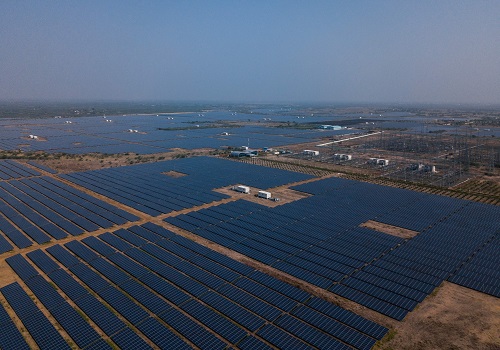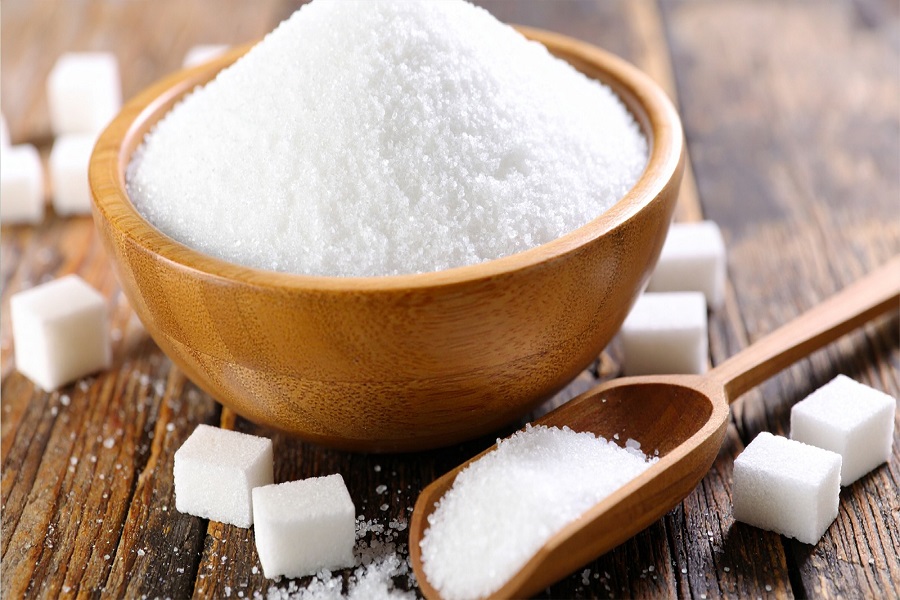Crudeoil trading range for the day is 5626-5854. - Kedia Advisory

Gold
Gold prices edged up by 0.19% to close at Rs.76,619 as the November U.S. jobs report painted a mixed picture of the labor market. Nonfarm payrolls rose by 227,000, exceeding estimates of 218,000, but the unemployment rate climbed to 4.2% from 4.1% in October. The data supported expectations of a 25-basis-point Federal Reserve rate cut later this month. Global demand dynamics also influenced gold prices. The World Gold Council (WGC) reported significant gold-backed ETF outflows of 28.6 tonnes in November, worth $2.1 billion. Despite this, North American investors increased ETF purchases, signaling robust regional interest. In contrast, physical gold demand weakened in key markets like India and China due to higher domestic prices and seasonal factors. Indian dealers offered a discount of $2 per ounce, while in China, discounts ranged between $11-$15 per ounce. Central banks emerged as strong supporters of the gold market, with net purchases of 60 tonnes in October—the highest monthly tally in 2024. India led these efforts, adding 27 tonnes in October and a total of 77 tonnes year-to-date, a fivefold increase over 2023. Global third-quarter demand, excluding OTC trading, was stable at 1,176.5 tonnes, with strong investment activity offsetting weaker jewelry demand. Gold saw short covering as open interest declined by 1.17% to 12,420 contracts, while prices rose Rs.143. Immediate support is at Rs.76,340, with a break testing Rs.76,060. Resistance is pegged at Rs.76,870, and a breach could target Rs.77,120.
Trading Ideas:
* Gold trading range for the day is 76060-77120.
* Gold steadied after November jobs report signaled labor market conditions
* U.S. nonfarm payrolls rose by 227,000 last month
* Physical gold was sold at a discount in India for the first time in six weeks
Silver
Silver prices inched up by 0.03% to Rs.92,448, supported by better-than-expected U.S. labor market data. The U.S. economy added 227,000 jobs in November 2024, significantly recovering from October’s revised 36,000 job gain, which was impacted by Boeing strikes and hurricane disruptions. However, the unemployment rate ticked up to 4.2%, aligning with forecasts, while average hourly earnings rose by 0.4%, slightly exceeding expectations. These figures bolstered the market's confidence, with an 88% probability now priced in for a 25-basis-point rate cut by the Federal Reserve this month. Globally, silver remains in a structural deficit for the fourth consecutive year, with a shortfall of 182 million ounces anticipated in 2024. Total demand is forecast to reach 1.21 billion ounces, driven by record industrial applications and recovering jewelry consumption. Meanwhile, supply growth of 2%, supported by increased mining activity in Mexico, Chile, and the U.S., partially offsets demand. Recycling is expected to contribute an additional 5% due to increased western silverware scrap. India’s silver imports are surging, driven by solar panel manufacturing, electronics demand, and speculative investments. In the first half of 2024, imports soared to 4,554 tons compared to just 560 tons a year ago, as buyers replenish depleted inventories from 2023 and hedge against rising prices. Silver is under fresh buying as open interest rose by 0.56% to 24,727 contracts while prices gained Rs.24. Support is at Rs.91,765, with a dip potentially testing Rs.91,090. Resistance is pegged at Rs.93,195, and a breakout could push prices to Rs.93,950.
Trading Ideas:
* Silver trading range for the day is 91090-93950.
* Silver steadied after the United States added more new jobs than expected last month.
* The US economy added 227K jobs in November 2024, marking a strong recovery from the upwardly revised 36K gain in October.
* The unemployment rate in the United States went up to 4.2% in November of 2024 from 4.1% in the prior month.
Crude oil
Crude oil prices fell by 1.36% to Rs.5,726, weighed down by weaker-than-expected demand from China and rising production in the U.S. Despite a larger-than-anticipated drop in U.S. crude inventories—down by 5.073 million barrels in the week ending November 29, the largest decline in five months—the market remained under pressure. Meanwhile, gasoline and distillate stocks rose by 2.362 million and 3.383 million barrels, respectively, surpassing expectations. OPEC+ delayed the unwinding of production cuts to April 2025, citing seasonal demand softness in the first quarter. The decision aligns with concerns over a global slowdown, particularly in China, and increasing oil supplies from other regions. The group also extended the full unwinding of cuts to 2026. Analysts, including Bank of America, forecast oil surpluses to persist, potentially driving Brent prices to average $65 per barrel in 2025. The U.S. Energy Information Administration (EIA) lowered its global demand growth forecast to 1.2 million barrels per day (bpd) for 2025, revising earlier projections due to weakening economic activity in China and North America. U.S. production is expected to reach 13.22 million bpd in 2024 and 13.54 million bpd in 2025, both slightly below previous estimates. Crude oil is experiencing fresh selling pressure as open interest surged by 45.71% to 13,778 contracts, with prices dropping Rs.79. Support is at Rs.5,676, with a breach potentially testing Rs.5,626. Resistance is at Rs.5,790, and a move above could target Rs.5,854.
Trading Ideas:
* Crudeoil trading range for the day is 5626-5854.
* Crude oil dropped amid weak demand from China and rising production in the U.S.
* Saudi energy minister says OPEC+ output decision based on fundamentals
* OPEC+ pushed back the start of oil output rises by three months until April and extended the full unwinding of cuts by a year until the end of 2026.
Natural gas
Natural gas prices increased by 0.65%, settling at Rs.262, driven by forecasts for cooler weather and increased heating demand over the next two weeks. Additionally, rising gas flows to U.S. liquefied natural gas (LNG) export plants supported the market. However, gains were limited as utilities reported a smaller-than-expected storage withdrawal. The U.S. Energy Information Administration (EIA) reported a 30 billion cubic feet (bcf) withdrawal for the week ending November 29, lower than the 43 bcf forecasted and well below the five-year average draw of 47 bcf. Natural gas output in the Lower 48 states averaged 102.2 billion cubic feet per day (bcfd) in December, up from 101.5 bcfd in November, although still below the December 2023 record of 105.3 bcfd. U.S. natural gas inventories ended the injection season with 3,922 bcf, the highest since 2016, and currently stand 7.8% above the five-year average. Despite this, the last two weeks of the injection season saw higher-than-average injections, further boosting storage levels. Technically, the market witnessed short covering as open interest declined by 0.94% to 19,203 contracts while prices rose Rs.1.7. Natural gas finds immediate support at Rs.257, with the potential to test Rs.251.9 if breached. Resistance is expected at Rs.265.2, and a move above could push prices toward Rs.268.3.
Trading Ideas:
* Naturalgas trading range for the day is 251.9-268.3.
* Natural gas gained on forecasts for cooler weather and on rising amounts of gas flowing to LNG export plants.
* EIA said utilities pulled 30 billion cubic feet of gas out of storage
* U.S. March-April widow maker spread in contango
Copper
Copper prices gained 0.19%, closing at Rs.821.75, supported by declining Chinese inventories and concerns over copper concentrate supply. A treatment charge deal between Chilean miner Antofagasta and Jiangxi Copper, lowering processing fees for 2025, raised concerns about the availability of copper concentrate in the spot market. Furthermore, Rio Tinto’s forecast of higher copper production, especially from its Mongolian assets, added to the positive outlook for copper. Copper inventories on the Shanghai Futures Exchange (SHFE) fell by 10%, reflecting a 71% decline since June. In China, authorities skipped their usual November meeting readout, heightening speculation about potential stimulus measures as the country faces growing uncertainties, including political factors. Meanwhile, Chinese manufacturing activity expanded for the second consecutive month in November, strengthening copper demand. The global refined copper market recorded a 131,000 metric ton deficit in September, compared to a surplus of 43,000 metric tons in August, indicating tightening supply. China's unwrought copper imports rose by 1.1% in October, driven by improving demand. For the year, China’s copper imports increased by 2.4%, reflecting stronger seasonal demand. Copper is currently under short covering, with open interest dropping by 8.37% to 6331 contracts. Prices rose by Rs.1.55. The immediate support for copper is seen at Rs.818.6, with a potential test of Rs.815.5 if this level is breached. Resistance is expected at Rs.826.1, and a move above could see prices testing Rs.830.5.
Trading Ideas:
* Copper trading range for the day is 815.5-830.5.
* Copper gains amid declines in Chinese inventories and concerns about supply of raw materials
* Rio Tinto forecast higher copper production, mostly on an anticipated 50% output surge from its Mongolian assets.
* SHFE registered another 10% decline in weekly data, bringing the total fall since early June to 71%.
Zinc
Zinc prices fell by 1% to settle at Rs.286.05 as domestic smelter production increased more than expected in key regions such as Qinghai, Inner Mongolia, Xinjiang, and Hunan. December 2024 is expected to witness a production rise of over 20,000 metric tons (mt) month-on-month (MoM), representing a 5% MoM increase. The cumulative domestic refined zinc production for 2024, however, is projected to decline by over 6% year-on-year (YoY). Recovery from maintenance and year-end production boosts in various regions are driving the rise, with January 2025 production also anticipated to remain high. Globally, the zinc market's deficit narrowed to 79,500 metric tons in September from 85,000 tons in August, according to the International Lead and Zinc Study Group (ILZSG). For the first nine months of 2024, the deficit stood at 8,000 tons, contrasting sharply with a surplus of 358,000 tons in the same period of 2023. In September, China's refined zinc production increased by over 2% MoM, though it remained down over 8% YoY. The growth was fueled by production recovery post-maintenance in regions like Sichuan, Gansu, and Inner Mongolia. The zinc market is under long liquidation, with open interest dropping by 18.71% to 2,803 contracts. Prices face support at Rs.283.7, with a breach potentially testing Rs.281.2. Resistance is expected at Rs.289.7, and a move above this level could push prices towards Rs.293.2.
Trading Ideas:
* Zinc trading range for the day is 281.2-293.2.
* Zinc dropped as smelter production slightly increased.
* In December 2024, domestic refined zinc production will increase by over 20,000 mt MoM or about 5% MoM
* The global zinc market deficit edged down to 79,500 metric tons in September from 85,000 tons in August
Aluminium
Aluminium prices fell by 1.14% to settle at Rs.243.3, pressured by increased domestic production and higher exports. China, the world's largest aluminium producer, saw its production rise 1.6% year-on-year (YoY) in October to 3.72 million metric tons. Cumulatively, aluminium output from January to October reached 36.39 million tons, marking a 4.3% YoY increase. Smelters ramped up operations due to improved profitability and strong demand, particularly in key regions like Shandong, Xinjiang, and Inner Mongolia. Daily aluminium output averaged 120,000 tons in October, slightly lower than September's average. On the export front, China exported 5.5 million tons of unwrought aluminium and related products in the first ten months of 2024, a 17% YoY surge. October exports alone reached 577,000 tons, up 31% YoY, highlighting robust global demand. However, production challenges loom, including maintenance at Guangxi smelters affecting 100,000 metric tons per year and smaller-scale pot maintenance in Sichuan and Chongqing. Meanwhile, alumina cost pressures and environmental regulations may constrain production growth in December. Aluminium prices are under long liquidation, with open interest dropping 13.63% to 3,264 contracts. Prices find support at Rs.242, with a break potentially testing Rs.240.5. Resistance is seen at Rs.245.5, and a move above this level could lead to Rs.247.5.
Trading Ideas:
* Aluminium trading range for the day is 240.5-247.5.
* Aluminium dropped as domestic aluminum production increased by 2.74% YoY.
* Entering December 2024, the ramp-up of new capacities and capacity resumptions are expected to further increase aluminum operating capacity.
* Aluminium inventories in warehouses monitored by the Shanghai Futures Exchange fell 1.5% from last Friday.
Cottoncandy
Cottoncandy prices rose marginally by 0.05% to Rs.55,660, supported by stronger demand from garment industries and robust export orders. India's cotton production for the 2024/25 season is projected to decline by 7.4% to 30.2 million bales due to reduced acreage and crop damage from excessive rainfall. The USDA has also revised India’s production forecast to 30.72 million bales, citing pest issues and weather-related losses, while ending stocks are estimated at 12.38 million bales. Declining production is expected to curtail exports, estimated at 1.8 million bales, compared to 2.85 million bales last year, while imports are likely to increase to 2.5 million bales, up from 1.75 million bales. Globally, cotton production is forecast to rise by over 200,000 bales, driven by gains in China, Brazil, and Argentina, which offset declines in the U.S. and Spain. World trade estimates have been reduced by 500,000 bales, largely due to lower Chinese imports, while global ending stocks are projected at 76.3 million bales, slightly lower than earlier estimates. The market witnessed short covering, with no change in open interest, settling at 288 contracts. Prices rose by Rs.30, indicating modest buying interest. Cottoncandy finds immediate support at Rs.55,440, with a decline below this level potentially testing Rs.55,230. Resistance is expected at Rs.55,880, with a move above likely pushing prices to Rs.56,110.
Trading Ideas:
* Cottoncandy trading range for the day is 55230-56110.
* Cotton settled flat as Cotton yarn prices in south India increased.
* India's cotton production in 2024/25 is likely to fall by 7.4% from a year ago
* Cotton production is projected to increase in China, Brazil, and Argentina, more than offsetting reductions in the US and Spain – USDA
* In Rajkot, a major spot market, the price ended at 25820.1 Rupees gained by 0.06 percent.
Turmeric
Turmeric prices closed lower by -0.21% at Rs.13,186 due to profit booking after previous gains driven by strong buying and limited supplies. Daily arrivals increased to 9,030 bags from 7,965, with notable activity in Hingoli and Erode trading centers. However, Hingoli markets were intermittently closed, partly due to ongoing elections in Maharashtra. Market sentiment remains firm as stock levels are low, and delayed harvesting caused by prolonged vegetation growth is expected to push new crop arrivals further into the season. While domestic crop acreage has improved significantly this year—with estimates of 3.75–4 lakh hectares compared to last year's 3–3.25 lakh hectares—exports show mixed trends. April–September 2024 turmeric exports rose slightly by 0.96% to 92,911.46 tonnes compared to the same period in 2023. September exports stood at 15,326.76 tonnes, a 68.69% increase from the previous year, but a 4.06% decline from August. Imports during the same period surged 184.73% year-on-year to 15,742.12 tonnes, driven by demand for specific varieties. Turmeric futures experienced long liquidation, with open interest declining by 5.41% to 7,255 contracts. Prices fell by Rs.28, reflecting subdued buying momentum. The immediate support is seen at Rs.13,124, with a further drop likely to test Rs.13,062. On the upside, resistance is expected at Rs.13,274, and a break above this could lead to testing Rs.13,362.
Trading Ideas:
* Turmeric trading range for the day is 13062-13362.
* Turmeric dropped on profit booking after prices gained on strong buying activity amid reports of low supplies.
* Turmeric arrivals rose to 9,030 bags from 7,965 bags in the previous session.
* Although crop acreage has improved, delay in harvesting due to prolonged rains may impact the timelines of fresh supplies.
* In Nizamabad, a major spot market, the price ended at 13935.6 Rupees gained by 0.15 percent.
Jeera
Jeera prices edged up by 0.23% to settle at Rs.23,855, supported by delays in sowing in Gujarat and Rajasthan, the major producing states. High day temperatures have disrupted seeding and germination, significantly impacting progress. In Gujarat, only 57,915 hectares were sown by November 25, a steep decline from last year’s 2.44 lakh hectares for the same period. This represents just 15% of the state’s normal jeera cropping area of 3.81 lakh hectares. The sowing season has been delayed by 20-25 days, raising concerns about a potential production decline. India’s jeera production for 2023-24 was estimated at 8.6 lakh tonnes, a sharp increase from 5.77 lakh tonnes in the previous year. However, for the upcoming season, production and acreage in Rajasthan are estimated to decline by 10-15%. The global market remains favorable for Indian jeera due to its cost advantage, priced at $3,050 per tonne compared to Chinese cumin, which is $200-250 higher. Increased demand from Europe, China, and the Middle East, along with festive season demand, has boosted export volumes. During April–September 2024, exports surged by 70% to 119,249.51 tonnes, with September alone witnessing a 162% rise compared to the previous year. Jeera futures saw short covering as open interest dropped by 1.08% to 1,374 contracts. Prices gained Rs.55, with support seen at Rs.23,540, and a breach below could test Rs.23,220. Resistance is expected at Rs.24,120, and a move above could lead to Rs.24,380.
Trading Ideas:
* Jeera trading range for the day is 23220-24380.
* Jeera prices gained as sowing has been delayed.
* Higher day temperatures in the past few weeks has impacted the seeding of jeera and has also led to poor germination in various places.
* In Gujarat, jeera sowing has taken place in only 57,915 hectares till November 25 during the rabi 2024-25 cropping season.
* In Unjha, a major spot market, the price ended at 24408.9 Rupees gained by 0.19 percent
Views express by all participants are for information & academic purpose only. Kindly read disclaimer before referring below views










More News

Sell Naturalgas Mar @ 360 SL 368 TGT 352-344. MCX - Kedia Advisory













